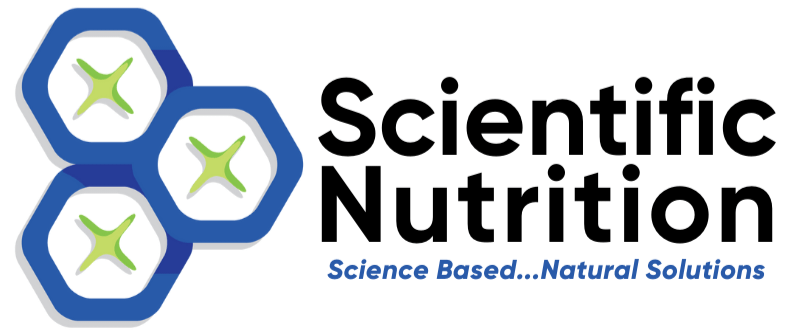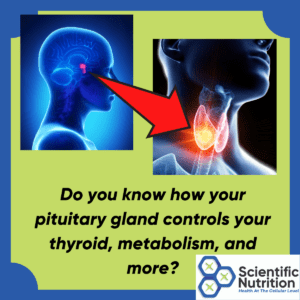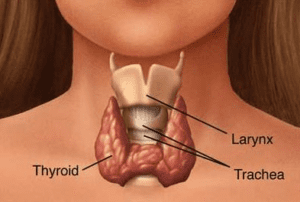What if your symptoms are a sign of hormone imbalance?
There are many steps in the process of having your hormones go “out of whack”. Hormone imbalance can affect every aspect of your health. Getting a blood test is not always the overall reason for imbalances. You may need to dig deeper into what your cellular level is telling you.
Looking at a blood test is like a screenshot of a movie whereas your Hair Analysis is the whole film. I’d like to explain the pathways and all of the different turns that have to happen for a smooth flowing hormone process to work optimally. We need steady production of melatonin, estrogen, testosterone, dopamine, serotonin, T4, adrenaline, etc. but making it is just one piece of the puzzle.
The most common hormones that I see on a Hair Analysis that is out of balance would be the thyroid ones as well as their process to supply you with energy. Let’s think of your body as a factory in this example to understand the functions needed to physically have the fuel to make it through a day.
The Power Plant–
Your brain is the master control room within the building. It has neurotransmitters like your office telephone system wiring together all of the workers for communications. If the mainline is down it will begin to affect every function from nerve endings to the result of low blood sugar.
The CEO–
Your hypothalamus is a little gland by the base of the brain above your pituitary gland connecting the endocrine system and the nervous system. It is part of the forebrain to steer you through your everyday actions and even in control of your body temperature. The hypothalamus can tell your pituitary which of the hormones are in demand and need to be made.
It creates messenger-type hormones that relay information between groups of cells or between tissues and organs. It sends down orders to the pituitary to create TRH (Thyrotropin-Releasing Hormone) to produce TSH (Thyroid Stimulating Hormone) OR CRH (Corticotrophin-Releasing Hormone) which in turn triggers ACTH (Adrenocorticotropic Hormone) to pump out Cortisol in times of stress. There are a few more hormones it tells the pituitary to make as well but that’s for another time.
The VP of Operations–
This big shot is the pituitary gland.
What hormone does the pituitary gland produce?
It makes many hormones as mentioned from TSH for thyroid, FSH for follicles in women showing female hormone levels, and many more. This is the first step in the glands to dictate which hormones need to be made for optimal functions. The cells that are far from the thyroid well past the liver will notify the pituitary to tell it if you need more energy or to halt production. There needs to be open communication in both directions.
The Head Supervisor–
This would be the thyroid gland. It is in charge of making the hormone T4 that needs to be accompanied by a binding protein (albumin or globulin on your blood work). Together they are escorted onto a cell to travel into your liver. Around 90-93% of your T4 is produced by your thyroid.
The workforce–
Your cells have receptors that are open to receiving T4 once they let go of their binding protein acting like a ski lift shuttle. Once it is let go it is considered a “free hormone” until it finds a workstation receptor. If you have a high T4 Free it means your thyroid may be working fine but you have too many T4 hormones that are unbound to protein to catch a ride to the much needed cell receptors.
What makes cell receptors unavailable?
- Stress- internal (detox, nutrient deficiency, disease…)or external (lifestyle, relationships, worries..), etc.
. - Blood sugar or insulin imbalance causes mechanisms to not work correctly
. - Inflammation
. - T4 medication when the issue is not in T4 production
. - Gut microbiome imbalance that can’t process efficiently
. - Fatty acid imbalance (Omega 3, 6, 9) impedes hormones to work
Once the right hormone for the job gets into the cell it can begin energy production, soothe with anti-inflammatory cortisol, epinephrine to raise blood pressure, and even female hormones to trigger menstruation.
Accounts Receivable–
The liver has well over 500 functions! A few important ones are:
- removing toxins from the blood
- regulating clotting
- maintaining blood sugar
- breaking down or storing poisons (drugs, alcohol, heavy metals)
- flushing waste products
- digesting fats
You must have available hormone T4 to covert to the usable form of energy known as T3. Since only 7-10% of active T3 is made in the thyroid, the rest must be converted. This is done with selenium inside your liver for energy.
Once again, if you don’t have enough binding protein you may have a high Free T3. This means the energy can’t get to a cell for use as natural energy.
What does the liver have to do with hormone imbalance?
The liver has to metabolize your hormones into metabolites with the assistance of your gut microbiome aka probiotics. They also help to supply extra bile the gall bladder storage. This bile forms the waste byproducts into fecal matter or urine to be escorted out.
If these metabolites are only partially detoxified or metabolized they become toxic and recirculate throughout your body. They can hop onto an open cell receptor edging out a good hormone. Metabolites can be clogging up your cells. The free floating hormone can then show up on your blood test as excessive or high hormone levels. A good example would be estrogen dominance in men who have “man boobs” or high cortisol. It also causes extra belly fat and creates insulin surges.
Having adequate bile to bind to the hormone metabolites that have been spent is very important. I work with clients to improve their digestion along with this very important elimination pathway.
Accounts Payable–
Healthy cells can carry your hormones where they need to go for processing. If they are too thick or wearing too many layers you won’t get enough to get to the destination. If they are thin or ghostly, they will die quickly. They will leave behind another free radical for disease to move in and grow along with the inflammation.
When you have a great balance between (Na/K) Sodium to Potassium ratio leaving the flow in and out of cells in balance. This is when your cells have enough “staff members” to do the work. The two fatty lipid layers are like swinging doors. They are allowing the right amount of traffic of nutrients, oxygen, and toxins to function like a well-oiled machine. Your Hair Analysis results will show the ideal 2.50 ratio indicating no sign of inflammation.
If your Na/K is imbalanced, you need to correct it for all cellular function to work optimally. It may be to your incoming nutrients, taking out the toxic trash, and eliminate contaminants. Some may be Endocrine Disruptive Chemicals. These outside chemicals are within pesticides, fire retardants, preservatives, etc. We have them around us or use them daily as they are suppressing or interrupting our hormones.
How to improve the hormone imbalance, hormone availability, and process?
- Support liver bile and practice detox modalities as 60% of T4 converts in the liver.
. - Maintain blood sugar stability and levels.
. - Optimal mineral balance is key. Protein levels must be on point for transport.
. - Have a thriving gut microbiome to reduce inflammation, 20% of T4 converts by it.
. - Keep a normal adrenal function as burnout causes low blood sugar.
. - Balance essential fatty acids EPA/DHA with Omega 9’s to increase cell receptor sensitivities.
Since we are made up of minerals, balancing them can improve or correct many of the symptoms. Sometimes I find just one mineral needed to convert a hormone can correct the cascade. It may not be a deficiency or excessive hormone, it may be a biochemical imbalance that began when you became mineral deficient.
No one has a pharmaceutical deficiency but at some point, we ALL have a mineral one. We can identify the missing links!
If you are ready to look at the root of symptoms through a Hair Mineral Analysis,
LET’S CHAT about your health goals!
Learn more about thyroid functions and hormones.
Copyright Scientific Nutrition, LLC 2022




